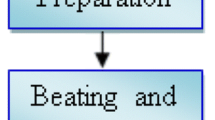Abstract
Regarding the developed countries, most of the meat products are packed into cellulose, respectively collagen casings. Minor defects or inaccuracies in threading of the shirred casings on the filling machines result in hundreds of meters of extremely lightweight waste. The logistics of such a waste is costly and other expenses are linked with the ongoing processing of the waste—landfilling. Two other methods of waste management of the cellulose casings (anaerobic fermentation and pyrolysis) were biotechnologically analyzed and financially assessed in a commercial scale. The results obtained confirm that, regardless of the chemical nature, the surface treatment technology of the casings significantly hampers the biodegradability. This makes the fermentation technologies time consuming and therefore economically unworkable. Intensive disintegration techniques are therefore necessary. However, the solid residue of the pyrolysis (also called biochar) represents more attractive product.




Similar content being viewed by others
References
Busch D, Kammann C, Grünhage L, Müller C (2012) Simple biotoxicity tests for evaluation of carbonaceous soil additives: establishment and reproducibility of four test procedures. J Environ Qual 41:1023–1032
Damborenea J, Navas C, García JA, Arenas MA, Conde A (2007) Corrosion–erosion of TiN–PVD coatings in collagen and cellulose meat casing. Surf Coat Technol 201:5751–5757
Fabbri D, Rombolà AG, Torri C, Spokas KA (2013) Determination of polycyclic aromatic hydrocarbons in biochar and biochar amended soil. J Anal Appl Pyrol 103:60–67
Feng C-H, Drummond L, Sun D-W, Zhang Z-H (2014) Evaluation of natural hog casings modified by surfactant solutions combined with lactic acid by response surface methodology. LWT Food Sci Technol 58:427–438
Guerrero LA, Maas G, Hogland W (2013) Solid waste management challenges for cities in developing countries. Waste Manag 33:220–232
Guibal E, Cambe S, Bayle S, Taulemesse JM, Vincent T (2013) Silver/chitosan/cellulose fibers foam composites: from synthesis to antibacterial properties. J Colloid Interface Sci 393:411–420
Hale SE, Lehmann J, Rutherford D, Zimmerman AR, Bachmann RT, Shitumbanuma V, O’Toole A, Sundqvist KL, Arp HP, Cornelissen G (2012) Quantifying the total and bioavailable polycyclic aromatic hydrocarbons and dioxins in biochars. Environ Sci Technol 46:2830–2838
Kameswari KSB, Kalyanaraman C, Thanasekaran K (2014) Evaluation of various pre–treatment processes on tannery sludge for enhancement of soluble chemical oxygen demand. Clean Technol Environ 16:369–376
Kirwan MJ, Strawbridge JW (2003) Plastics in food packaging. In: Coles R, McDowell D, Kirwan MJ (eds) Food packaging technology. Blackwell publishing, Oxford, pp 174–240
Klemeš J, Bulatov I (2008) Towards cleaner technologies minimising the environmental impact. Clean Technol Environ 10:107–110
Kolář L, Klimeš F, Gergel J, Kužel S, Kobes M, Ledvina R, Šindelářová M (2005) Methods to evaluate substrate degradability in anaerobic digestion and biogas production. Plant Soil Environ 51:173–178
Mardoyan A, Braun P (2015) Analysis of Czech subsidies for solid biofuels. Int J Green Energy 4:405–408
Maroušek J (2013) Prospects in straw disintegration for biogas production. Environ Sci Pollut Res Int 20:7268–7274
Maroušek J (2014) Economically oriented process optimization in waste management. Environ Sci Pollut Res 21:7400–7402
Maroušek J, Kawamitsu Y, Ueno M, Kondo Y, Kolář L (2012a) Methods for improving methane yield from rye straw. Appl Eng Agric 28:747–755
Maroušek J, Kondo Y, Ueno M, Kawamitsu Y (2012b) Commercial–scale utilization of greenhouse residues. Biotechnol Appl Biochem 60:253–258
Maroušek J, Zeman R, Vaníčková R, Hašková S (2014) New concept of urban green management. Clean Technol Environ Policy. doi:10.1007/s10098-014-0736-5
Maroušková A, Braun P (2014) Holistic approach to improve the energy utilization of Jatropha curcas L. Rev Téc Ing Univ Zulia 2:1–7
Miyamoto H, Yamane C, Seguchi M, Okajima K (2011) Comparison between cellulose blend films prepared from aqueous sodium hydroxide solution and edible films of biopolymers with possible application for new food materials. Food Sci Technol Res 17:21–30
Panepinto D, Genon G, Brizio E, Russolillo D (2013) Production of green energy from co–digestion: perspectives for the Province of Cuneo, energetic balance and environmental sustainability. Clean Technol Environ 15:1055–1062
Pöhlmann M, Hitzel A, Schwägele F, Speer K, Jira W (2013) Polycyclic aromatic hydrocarbons (PAH) and phenolic substances in smoked Frankfurter–type sausages depending on type of casing and fat content. Food Control 31:136–144
Rovira P, Vallejo VR (2002) Labile and recalcitrant pools of carbon and nitrogen in organic matter decomposing at different depths in soil: an acid hydrolysis approach. Geoderma 107:109–141
Sawyer CN, McCarty PL, Parkin GF (2003) Chemistry for environmental engineering and science, 5th edn. McGraw–Hill, Boston
Shirato Y, Yokozawa M (2006) Acid hydrolysis to partition plant material into decomposable and resistant fractions for use in the Rothamsted carbon model. Soil Biol Biochem 38:812–816
Sreenath HK, Jeffries TW (2011) Interactions of fungi from fermented sausage with regenerated cellulose casings. J Ind Microbiol Biotechnol 38:1793–1802
Tharanathan RN (2003) Biodegradable films and composite coatings: past, present and future. Trends Food Sci Technol 14:71–78
Ubando AT, Culaba AB, Aviso KB, Ng Denny KS, Raymond RT (2014) Fuzzy mixed–integer linear programming model for optimizing a multi–functional bioenergy system with biochar production for negative carbon emissions. Clean Technol Environ 16:1537–1549
Zhu H, Jia S, Yang H, Tang W, Jia Y, Tan Z (2010) Characterization of bacteriostatic sausage casing: a composite of bacterial cellulose embedded with ε–polylysine. Food Sci Biotechnol 19:1479–1484
Acknowledgments
The corresponding author acknowledges the financial support coupled with the award of the Japanese Society for Promotion of Science (2012) and the Czech Innovation (2013) award.
Author information
Authors and Affiliations
Corresponding author
Rights and permissions
About this article
Cite this article
Maroušek, J., Hašková, S., Zeman, R. et al. Techno-economic assessment of processing the cellulose casings waste. Clean Techn Environ Policy 17, 2441–2446 (2015). https://doi.org/10.1007/s10098-015-0941-x
Received:
Accepted:
Published:
Issue Date:
DOI: https://doi.org/10.1007/s10098-015-0941-x




